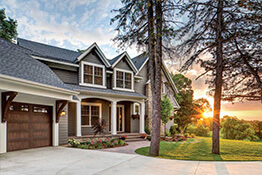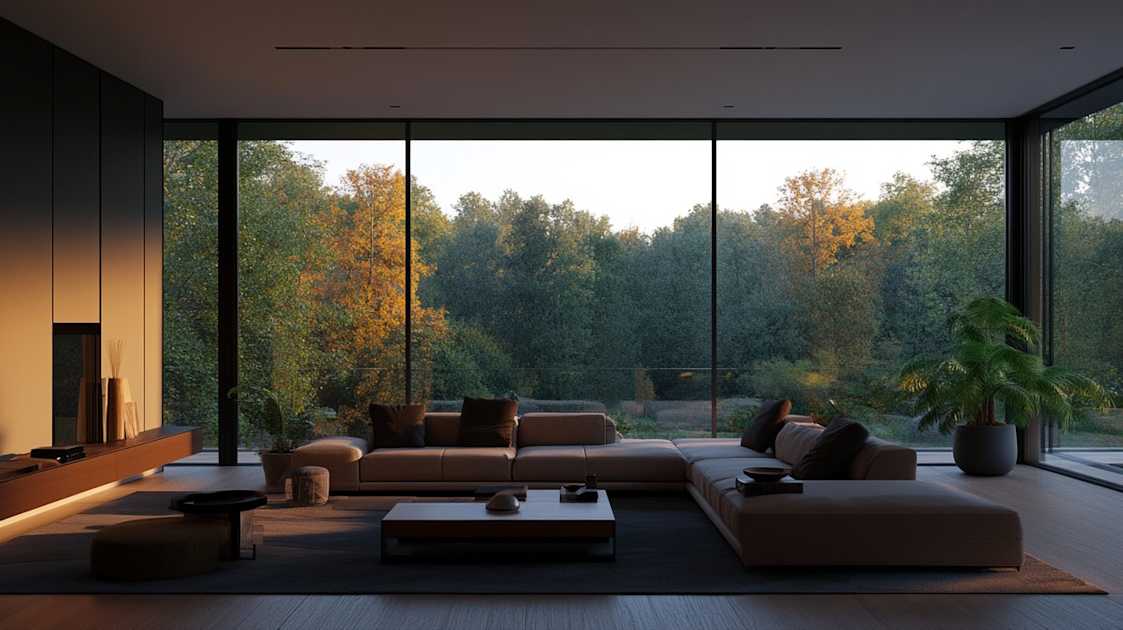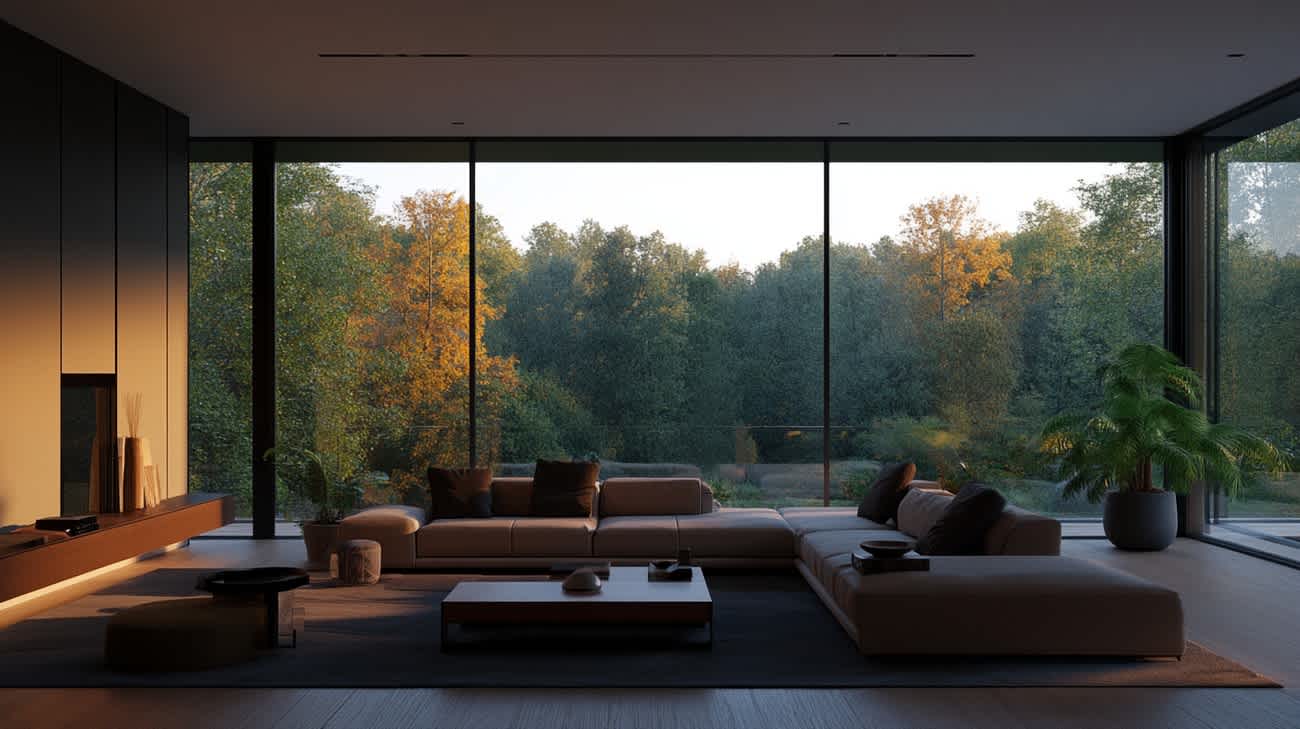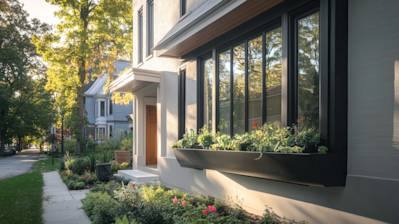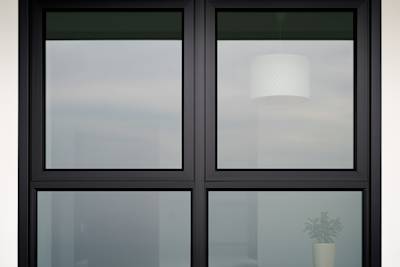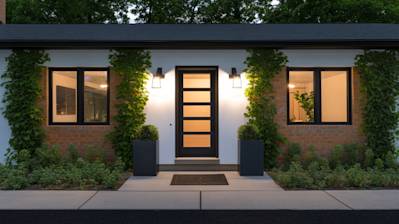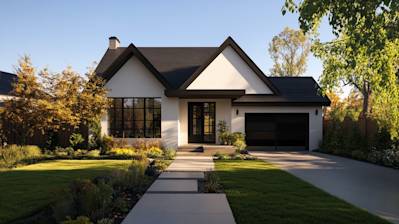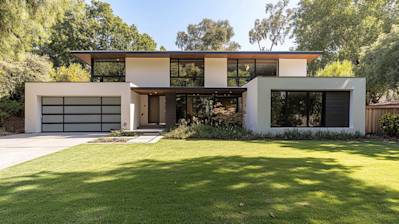Floor to ceiling windows – the epitome of modern architecture and a feature that's trending in home design. Homes, offices, and skyscrapers worldwide incorporate them into their designs. While they weren't always everyone's first choice, these windows are captivating the hearts of designers, homeowners, and architecture enthusiasts the world over.
What Exactly are Floor to Ceiling Windows?
Floor to ceiling windows, as the name suggests, are tall windows stretching from the floor of a room up to the ceiling. Unlike traditional windows, these designs aim to invite a vast amount of natural light into an area, enlarging the room visually and offering unobstructed views of the outside world.
History and Evolution
Originating from the architectural movements of the mid-twentieth century, these magnificent glass features were primarily aimed at blurring the barrier between the interior and exterior spaces, offering seamless integration with the natural environment. Slowly, this design rhetoric trickled down from the modernist villas to urban dwellings, eventually becoming a staple in contemporary homes and commercial buildings.
Different Types of Floor to Ceiling Windows
Floor to ceiling windows aren't one-size-fits-all. They come in a variety of styles to meet the diversified demands of architectural spaces and aesthetics, including:
- Fixed Glass Windows: Non-operable and essentially function as glass walls, offering stunning, uninterrupted views.
- Slider Windows: Slide horizontally, giving an alternative way to open the window for fresh air.
- Casement Windows: Hinged at one side and can be cranked open like a door, allowing for maximum ventilation.
- Picture Windows: Large fixed windows with low profile frames to optimize the field of view.
Construction Materials
When it comes to the construction of floor to ceiling windows, several materials can be used:
- Aluminium: Known for its strength, durability, and slim profiles, allowing for larger panes of glass.
- Wood: Provides a classic aesthetic, excellent insulation, and can be customized with paint or stains.
- Vinyl: Offers excellent thermal insulation, easy maintenance, and affordable pricing.
Cost of Floor to Ceiling Windows
The price of floor to ceiling windows can vary greatly based on the complexity of the project, glass type, framing material, and the overall size of the windows. Generally, the cost of these windows ranges from $700 to $1,600 per linear foot, including installation.
Incorporating Floor to Ceiling Windows into Different Architecture Styles
Floor to ceiling windows fully deserve their impeccable reputation in today's architectural vernacular due to their ability to accommodate themselves to numerous architectural styles:
- Modern and Contemporary: These architectural styles embrace simplicity, open floor plans, and large window designs. Floor to ceiling windows are an excellent fit in such set-ups.
- Industrial: Industrial-style lofts or apartments often use these windows for illuminating open spaces and complementing raw, exposed materials.
- Traditional: These windows can successfully be juxtaposed with more traditional architecture as well, harmonizing old and new design elements effortlessly for a unique visual appeal.
Installing Floor to Ceiling Windows
Proper installation is crucial to realize the full potential of floor to ceiling windows. It includes careful planning, precise measurement, and execution by expert installers to ensure a leak-free, thermally efficient, and structurally sound window system. Professional installation also ensures you meet the building codes of your region.
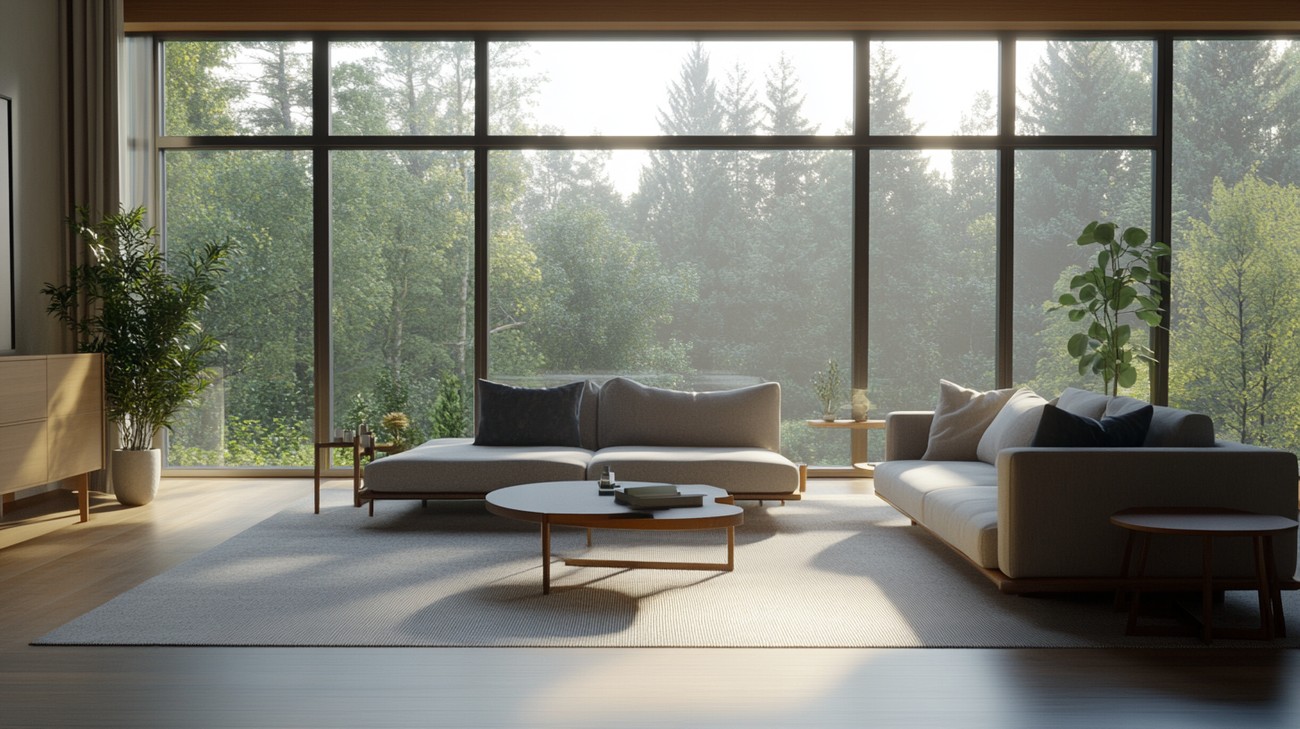
Frequently Asked Questions about Floor To Ceiling Windows
Does “Floor to Ceiling” Mean the Windows Reach the Extension of the Room?
As the name implies, floor to ceiling windows typically extend from almost the very bottom of the floor to the very top of the ceiling. But it might not always touch the extreme ends. This depends on the home's design and the installer’s discretion.
Can I Install Floor to Ceiling Windows in a Room That Doesn’t Have Them Already?
Yes, you can. A certified contractor can make structural changes to your wall to accommodate floor to ceiling windows. Keep in mind it’s not a simple job – it involves more than replacing a traditional window, and would likely require planning permission.
What Types of Rooms Are Ideal for These Windows?
Floor to ceiling windows can enhance many rooms, but they are often found in living rooms, dining rooms, and bedrooms that have a picturesque, uninterrupted view of the outdoors. They can also add immense aesthetic value to office spaces.
Is It Possible to Have a Floor to Ceiling Window in the Bathroom?
Yes, it's possible. A floor to ceiling window can make a small bathroom appear larger. However, privacy may become a concern, so many homeowners opt for frosted or tinted windows in bathrooms.
How Does the Price of Floor to Ceiling Windows Compare to Regular Windows?
Due to its size and the special handling it requires, floor to ceiling windows tend to cost more than regular windows. Exact costs would vary based on factors like material, size, type, and installation complexity.
How Durable Are Floor to Ceiling Windows?
These windows, just like regular types, can be highly durable, based on the material they're made of. High-quality tempered glass, for example, is tough and can withstand many impacts. That said, they're still larger glass surfaces, and can be expensive to replace if damaged.
Can Floor to Ceiling Windows Be Energy Efficient?
Yes, absolutely. Modern day floor to ceiling windows comes with energy efficient options like low-e coatings and double-glazing which significantly reduce heat loss in winters and keep your home cool in summers.
Are There Different Styles of Floor to Ceiling Windows?
There is a variety of styles available when it comes to floor to ceiling windows. You can choose from fixed windows which don't open, sliding windows, casement windows that pivot outwards, tilt and turn windows, among others. It’s best to research or consult with a professional installer to figure out what suits your home best.

Pros of Floor to Ceiling Windows
1. Natural Light Exposure
Unparalleled Sunlight Penetration
One of the greatest benefits of floor to ceiling windows is the amount of natural light they let into a room. They provide unparalleled sunlight penetration compared to traditional windows, given their larger size. This can help to brighten up a room, making it appear more open and spacious.
Energy Savings
The abundance of natural light can also help homeowners save on energy costs. During the day, there may be no need to turn on lights because of the amount of sunlight streaming in. This aspect may contribute to reducing electricity bills over time.
2. Enhanced Views
Scenic Views
Floor to ceiling windows can undoubtedly provide remarkable views. If your home overlooks nature, the city, or a well-manicured garden, large windows can serve as a constant, live piece of artwork. They act as wide, vertical canvases showcasing the outdoors' beauty and vibrancy.
Increased Perceived Space
Even when actual square footage is limited, floor to ceiling windows can make an area appear larger than it is. The windows provide an uninterrupted view of the outdoor area, extending the room's perception beyond its actual confines.
3. Aesthetics
Floor to ceiling windows add a level of sophistication and modernity to a home's design. They can convert an otherwise ordinary space into something extraordinary and stylish. This modern aesthetic can also increase the property's value if you ever decide to sell.
4. Accessibility to Fresh Air
Large windows often mean larger openings, providing more opportunity for fresh air to circulate within the home. This can promote better air quality and ventilation, particularly in warmer months when air conditioning might not be necessary.
Cons of Floor to Ceiling Windows
1. Privacy Issues
Exposure to the Public
One drawback of floor to ceiling windows is the inevitable lack of privacy. Without suitable window treatments, everything inside the home is on display to the public or neighbors. This can lead to discomfort and inconvenience as homeowners have to invest in solutions like blinds or curtains to maintain privacy.
Inadequate Sound Insulation
Floor to ceiling windows might not provide the best sound insulation. Noise from outside can easily penetrate through the large glass panes, disturbing the tranquillity within the home.
2. Cost and Maintenance
High Initial Cost
These large windows can be pretty expensive. The initial investment required for installation is higher than that of standard windows.
Regular Maintenance
Maintenance costs might also be higher because of the necessity to clean the large glass surfaces regularly, and to replace broken or damaged panes, which can be costly due to their size.
3. Energy Inefficiency
In contrast to the potential energy savings mentioned earlier, floor to ceiling windows can also result in energy inefficiency. Large glass panes can act as heat conduits, allowing heat to escape during winters and letting in the scorching sun's rays during summers. This can lead to higher energy costs for heating or cooling your home.
4. Safety Concerns
Floor to ceiling windows might pose safety risks, particularly for homes with children or pets. There’s the risk of accidents involving the large glass surfaces, especially if the glass is not of the safety type meant to shatter into less dangerous pieces.
5. Limited Wall Space
Finally, with floor to ceiling windows, you may feel restricted by the reduced usable wall space. It can limit where you can place furniture or hang décor, which might make arranging your interior space more challenging.

Myths/Misconceptions about Floor to Ceiling Windows
One of the trending architectures in modern homes is the installation of floor-to-ceiling windows. This sleek design choice brings a wealth of natural light into the room and adds an elegant aesthetic appeal. However, there are numerous myths and misconceptions surrounding the use of floor-to-ceiling windows that often deter homeowners from incorporating them into their properties.
Myth 1: They Compromise Privacy
In Urban Settings
Many people believe that floor-to-ceiling windows are a privacy nightmare, especially in dense urban environments where buildings are located in proximity to each other. They picture life on display, like a fishbowl for all to see.
The Reality
While it's understandable to think this way, various solutions can be used to address these privacy concerns. For instance, you can install shades or blinds that can be rolled down when needed. Tinted windows or reflective films can also prevent people from seeing inside, while you still get to enjoy the view.
Myth 2: They Are Too Expensive
Installation and Maintenance Costs
Often cited as a luxury, floor-to-ceiling windows are believed to incur exorbitant costs, both in terms of installation and maintenance.
The Reality
While the initial investment may be higher compared to conventional windows, the long-term benefits often outweigh the initial cost. Besides offering unobstructed views, these windows can also significantly reduce your electricity bill by exploiting natural light. Maintenance costs are also not as high as assumed. With the advent of self-cleaning glass and durable construction materials, these windows can efficiently stay clean and damage-free for a long time.
Myth 3: If One Breaks, The Whole Panel Must Be Replaced
Fear of Fragility
Due to their large size, it's a common misconception that if a section of a floor-to-ceiling window breaks, the entire panel would need to be replaced. This causes fear of high repair cost and fragility.
The Reality
In reality, glass repair has advanced considerably over recent decades. Breakage does not mean the whole panel has to be replaced. Besides, the glass used for floor-to-ceiling windows is typically toughened or laminated safety glass, which is much stronger and secure than standard glass.
Myth 4: They Are Not Energy Efficient
Concern Over Heat Loss/Gain
One of the biggest misconceptions about floor-to-ceiling windows is that they're energy-inefficient, causing too much heat loss in the cooler months and making the house uncomfortably warm during summers.
The Reality
Technological advancements have led to the availability of low-emissivity (Low-E) glass that can effectively limit the heat transfer between the interior and exterior of your home. Also, strategically placing trees or awnings can block the harsh sun, making your home energy efficient, regardless of the size of your windows.
Myth 5: They Don't Offer Enough UV Protection
Fear of Harmful Sun Rays
There's a belief that huge glass windows can increase exposure to harmful ultraviolet rays, leading to potential skin damage and bleaching of furniture.
The Reality
Modern window glass often comes with UV-blocking capabilities. It can block nearly 99% of harmful ultraviolet rays, hence protecting your skin and preventing your furnishings from fading.
By debunking these misconceptions about floor-to-ceiling windows, homeowners can learn the true benefits and drawbacks involved. Deciding to install such windows should be based on accurate information rather than myths and misconceptions.
Summary
Floor to ceiling windows are the perfect option if you want to achieve a sense of spaciousness in your home. They offer stunning, unrivaled views of your surroundings, making them an excellent choice for nature lovers. Letting in an abundance of natural light, they not only brighten up your space but can also contribute to energy savings. If you're looking for a timeless and elegant design feature that also offers practical benefits, these window styles are a worthwhile investment.
It's hard to debate the irresistible charm of floor to ceiling windows. They instantly add an element of luxury and grandeur to any interior. Moreover, they effectively bridge the gap between indoors and outdoors, providing a seamless visual connection with the world outside. By adding these large windows, your home won't just look incredible, but it will also feel happier and healthier with all the natural light and views it now enjoys.
Floor to ceiling windows are indeed large, but the benefits they bring make them a worthwhile design element. They present homeowners with a clever way to make smaller spaces seem larger, and darker rooms appear brighter. They perfectly blend aesthetics with functionality, offering breathtaking views while increasing your home's natural light. So, if you're thinking about giving your home a mini-makeover, consider incorporating these windows for a dramatic transformation.
About US Quality Construction of Columbus
At US Quality Construction of Columbus, we are all about giving your construction dreams a solid and beautiful reality. Based in the heart of Columbus, OH, we've been serving our community with top-tier construction services for several years now. Our team comprises professionals who are more lovingly known as wizards of construction, solving design dilemmas, and always ensuring to exceed expectations. We specialize in remodeling and renovating homes, businesses, and everywhere else that could use a dab of construction magic. Trust us, we take 'building dream spaces' quite literally! You dream it, we build it, simple as that. Welcome to a space where quality and satisfaction aren't just guaranteed, they're a must!
Tags: architecture, natural light, modern design,
